Foraging in December: Wild Edibles
📗 Let's explore more wonderful foraging tips from "The Edible City: A Year of Wild Food" book by John Rensten. Here's a quick reminder who John is. He's an author, Forage London founder and frustrated middle aged rock climber. He lived, worked and foraged in London for 20 years before finally escaping to Dorset, via Hampshire, in 2016 to concentrate on mushroom hunting and coastal foraging. Despite now living in a more rural part of the county, he still runs and organise numerous urban foraging events, wild food walks and mushroom forays.
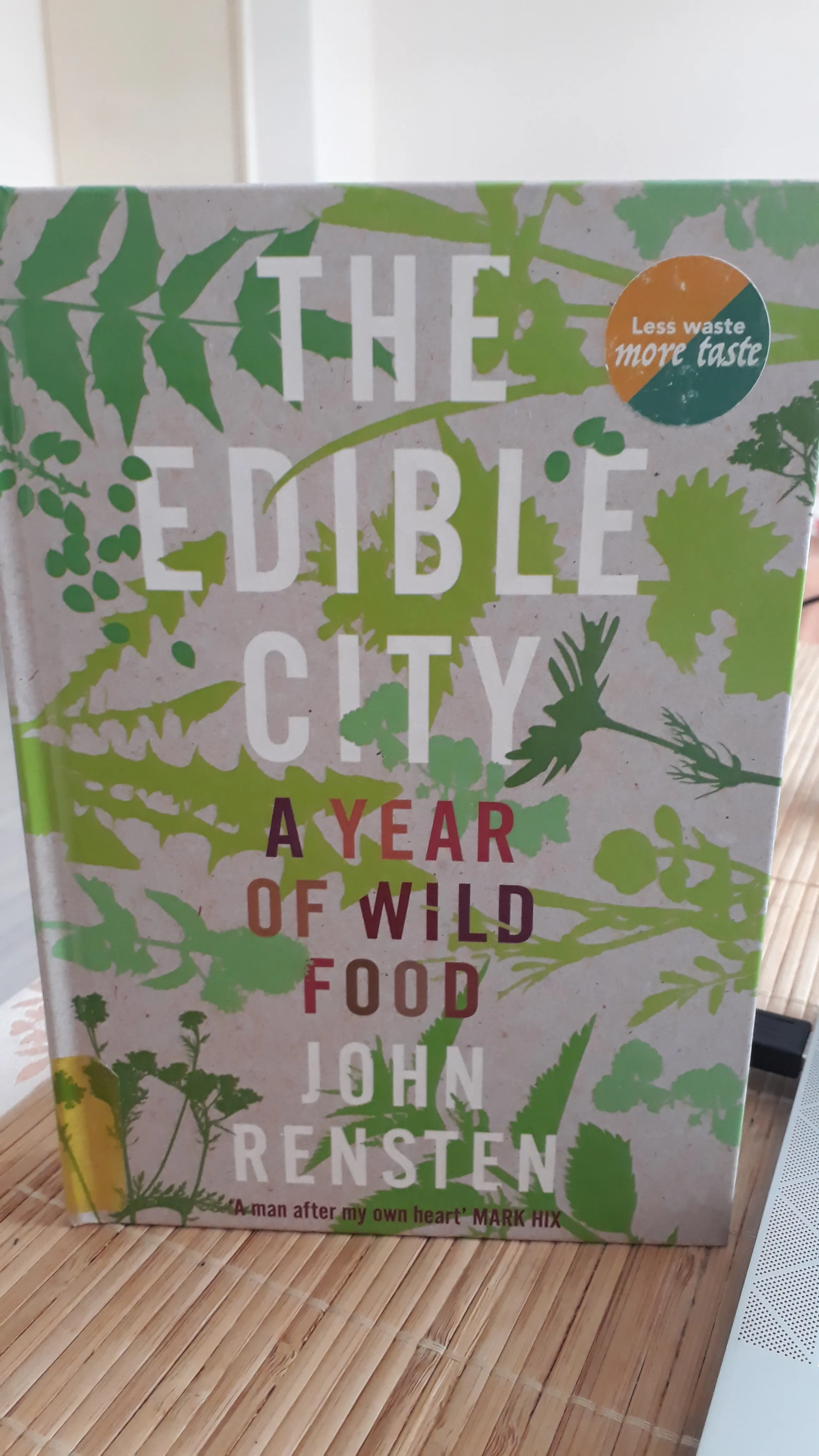
So shall we have a look what John recommend to focus on in December?
Here we go:
- Winter Chanterelle (Craterellus tubaeformis)
- Blackthorn (Prunus spinosa)
- Yarrow (Achillea millefolium)
- Wall Bellflower (Campanula portenschlagiana)
- Salad Burnet (Sanguisorba minor)
- Bittercress (Cardamine hirsuta)
- Cockspur (Crataegus persimilis 'Prunifolia')
Let's start with Winter Chanterelle; (Craterellus tubaeformis)
Parts used: ✅ Entire fruiting body, i.e. the caps and stems
Harvesting tip: 🍄 Collect in clumps then snap off the bases - don't bother with a knife
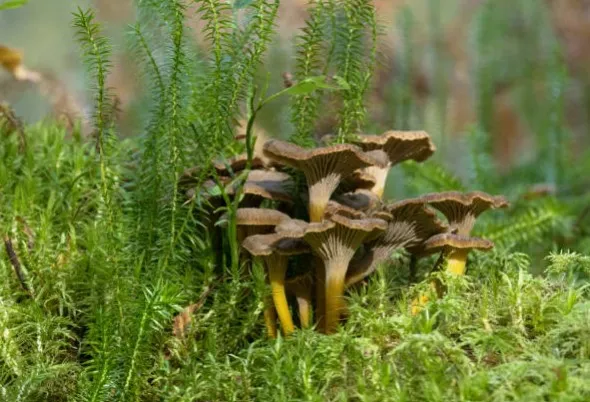
Winter Chanterelle is amazing frost resistant fungi growing often in in patches of many thousands. This wonderful little mushroom has a cap that looks very much like the fallen foliage in which it flourishes, 'hiding in plain sight' summing up its appearance perfectly. Once flipped over, it reveals a long yellow stem, which gives it another of its
🦵 common names, the yellow leg.
🌶️ Quick pickled winter chanterelle with rice wine, chilli and garlic
40g peeled thing-sliced ginger, 5g finely sliced garlic cloves, 2 medium deseeded and finely sliced red chillies, 40g fresh green peppercorns (substitute capers if needed), 150ml extra virgin olive oil, 1kg winter chanterelle or similar, 100ml rice wine vinegar, 50ml soy sauce
Sauté the ginger, garlic, chilli & peppercorns in the oil until fragrant and soft. Add the mushrooms and fry for 2 minutes. Add the vinegar, soy and 50ml water and cook for another minute before removing from the heat. Leave for 24 hours to pickle/marinate before serving. This is a zesty Japanese-style 'light' pickle so it won't last for months like a traditional preserve.
As a footnote, you can dry-fry (without any oil) the winter chanterelle for a minute beforehand, which will allow hem to release some water, so when you do come to cook them they will fry rather than just poaching in their own juices. This liquid can be reserved and used to make a mushroom gravy.
Blackthorn; (Prunus spinosa)
Parts used: ✅ Flowers, fruit
Harvesting tip: ⚠️ Be sure to avoid the spines; splinters from them can cause serious infection
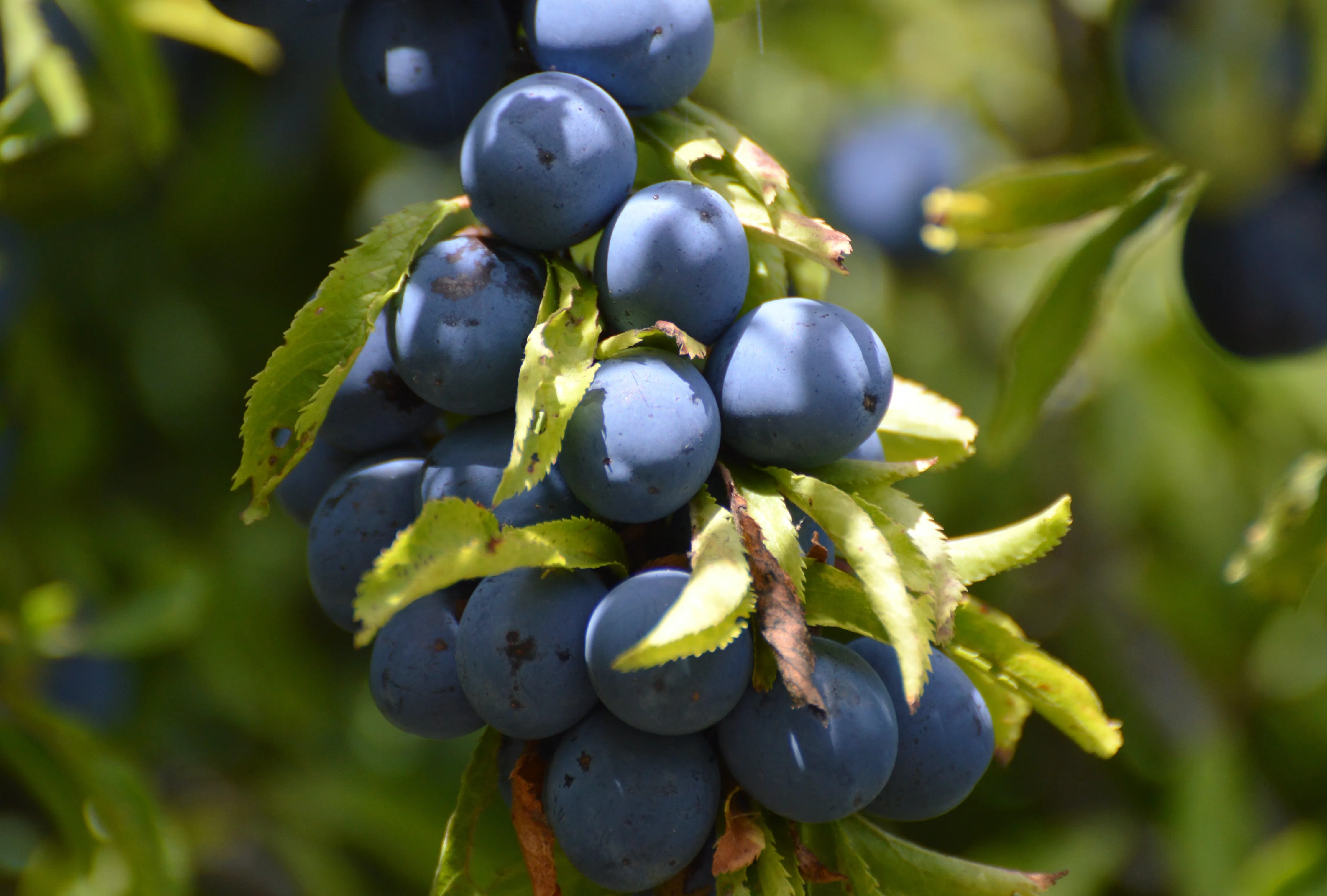
Sloe is the more common name for blackthorn, and generally used when describing these small purple plums and the festive flavoured gin for which they are famous. The traditional time to harvest is much earlier in the year, when the first frost arrives, this deadline having the dual purpose of cracking the skins to help release flavour and also allowing the fruits as long as possible on the branch to make plenty of sugar. As anyone who has tasted raw sloes will tell you, even fully ripened they are extremely drying, being very high in tart-tasting tannins.
🍶 Blackthorn pacharán with vanilla and coffee beans
1 litre ouzo, raki or Pernod, 1 litre vodka, 300g ripe sloes, 6-8 tbsp sugar, 2 cinnamon sticks, 24 coffee beans, 2 vanilla pods
Add the ripe sloes to the mixture of ouzo and vodka. In a big glass jar, leave everything to infuse for a couple of weeks, allowing the alcohol to take on the wonderful colours and flavours of the fruit. At this stage add the sugar, cinnamon, two dozen coffee beans and vanilla pods. Then the waiting begins. This needs to be left somewhere dark for at least a month, given a little shake every few days and then strained through muslin and bottled.
Yarrow; (Achillea millefolium)
Parts used: ✅ Leaves, flowers
Harvesting tip: 💡 Look for the new foliage on disturbed earth and grassland. The leaves and flowers become more bitter as the year progress
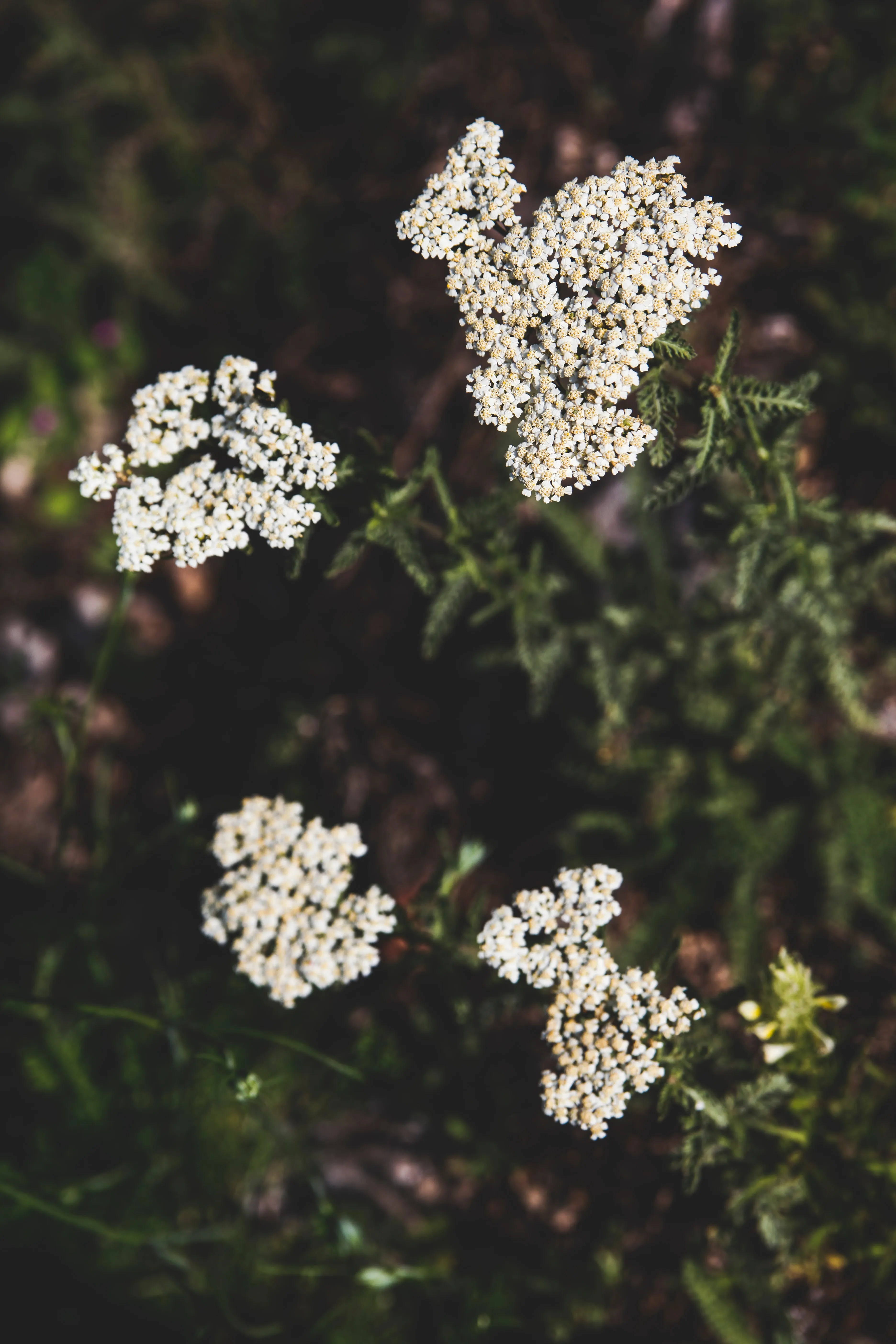
🌿 Yarrow, lavender and rosemary oxymel
350 cider vinegar, 225ml thin honey, a handful of yarrow stems and leaves, a handful of lavender leaves and flowers, a handful of rosemary leaves and stems
Vinegars have a long history of use as medicinal cordials, as well as for flavouring and preserving food, and vinegar drinks are having something of a renaissance at the moment, with posh cocktail bars favouring the sweet varieties known as shrubs, infused with fruits, berries or syrups.
🍯 Oxymel comes from the Latin oxymeli, meaning acid and honey, and traditionally this blend would have been used as a way to administer herbs that were too biter or unpleasant to take on their own.
Please note this recipe is suited for 350ml vinegar bottle and 225ml honey jar, so feel free to play around and make your own version. Heat both vinegar and honey together, just long enough for the honey to melt, then stir in a chopped-up handful of yarrow stems and leaves, the lavender and rosemary. When it had cooled, put everything into sterilized jar and leave it there for a couple of weeks before straining out the plant matter. This, or any similar blend, can be taken daily as a tonic, used like a cough mixture when needed or drunk as the base of a herbal tea.
Wall Bellflower; (Campanula portenschlagiana)
Parts used: ✅ Flowers and leaves
Harvesting tip: 🐕 Select plants that grow on higher rather than lower walls, out of the dog-wee zone
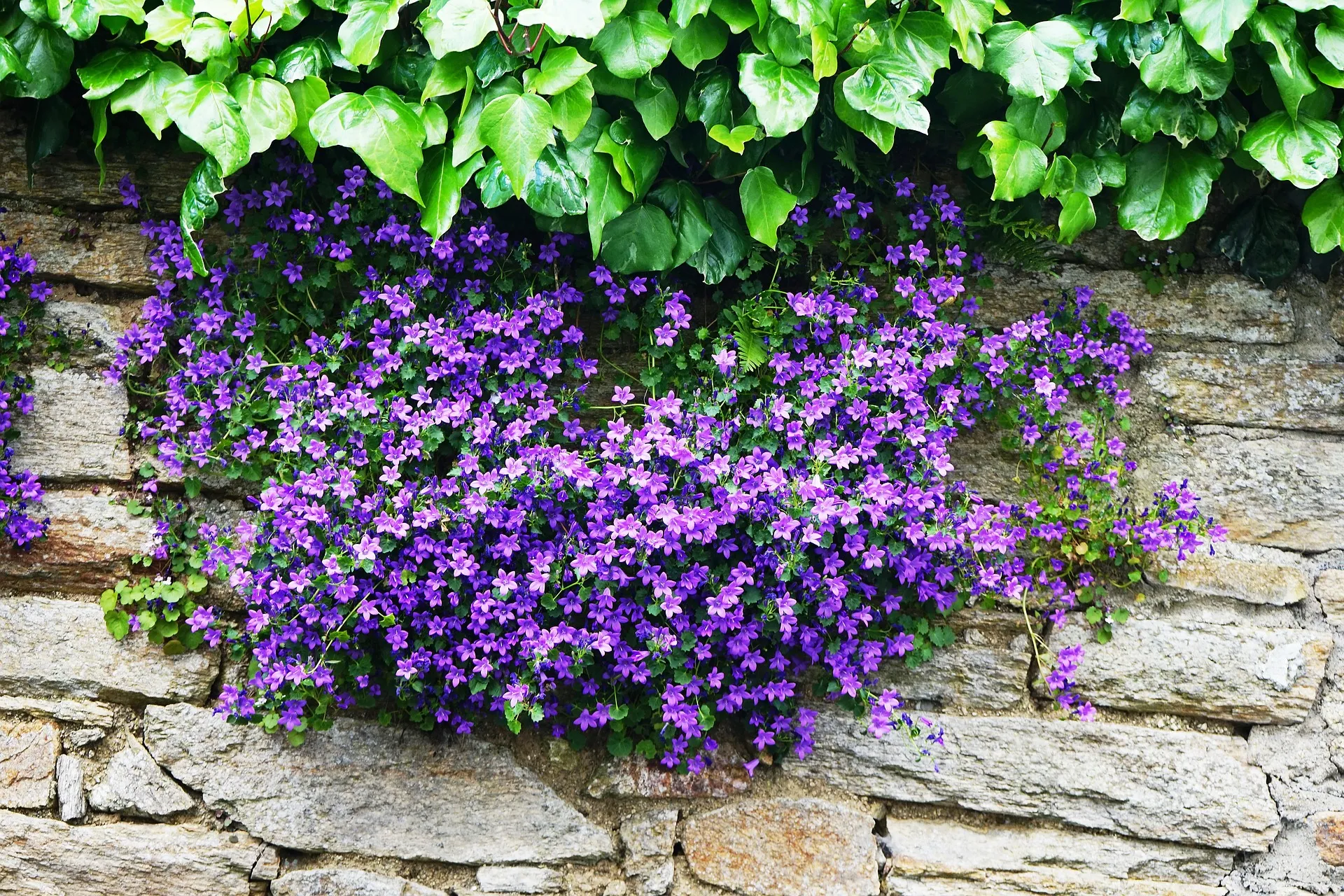
This plant with deliciously lush greenery and sweet purple flowers absolutely thrives in urban locations, often growing in a conveniently elevated position, as its name suggests, out of a wall.
Salad Burnet; (Sanguisorba minor)
Parts used: ✅ Leaves
Harvesting tip: 💡 The leaves are tastier and more succulent before flowering
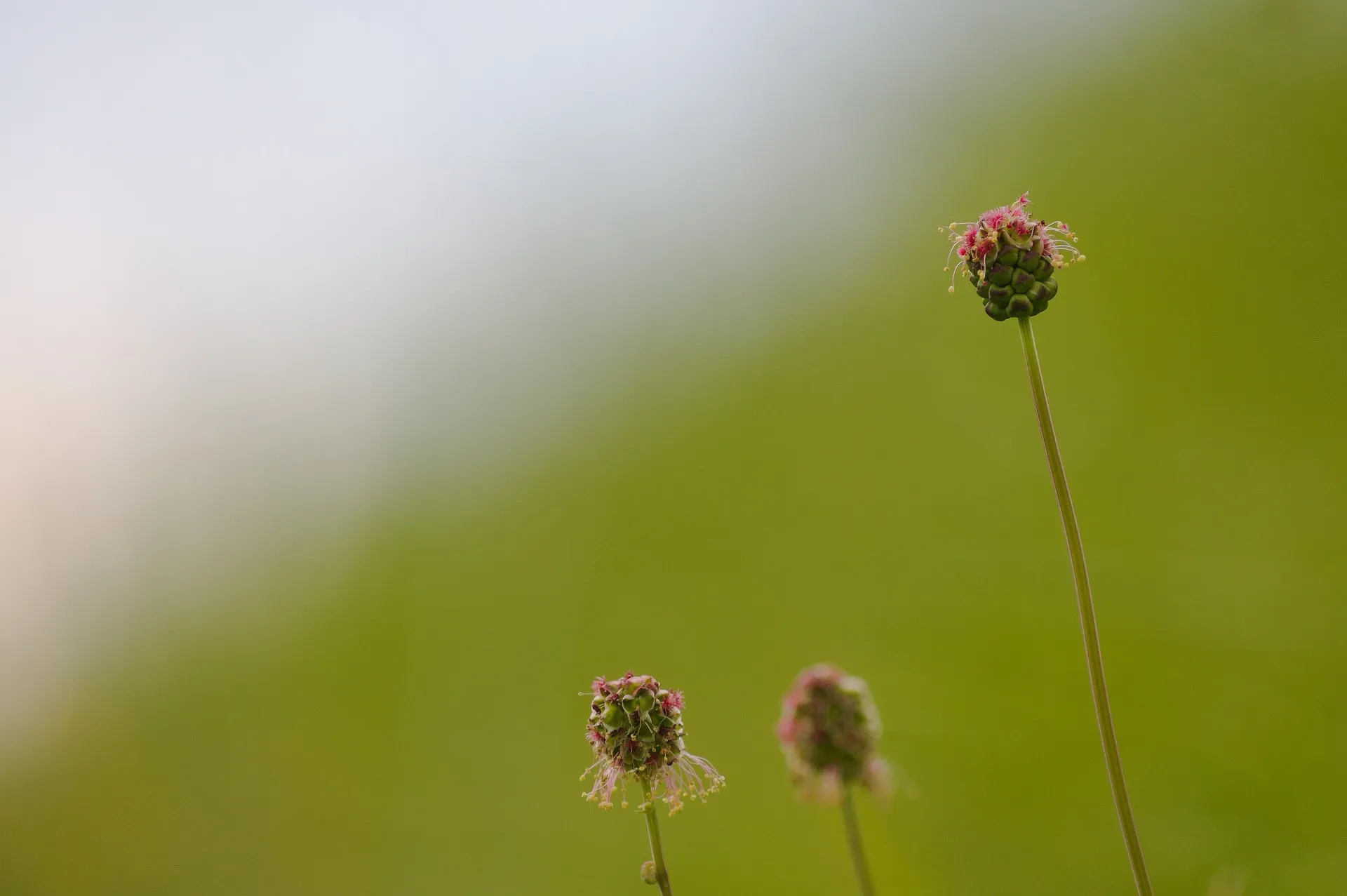
Bittercress; (Cardamine hirsuta)
Parts used: ✅ Leaves (including the stems), flowers
Harvesting tip: 💡 Cut at the base of the rosette to keep the leaves together
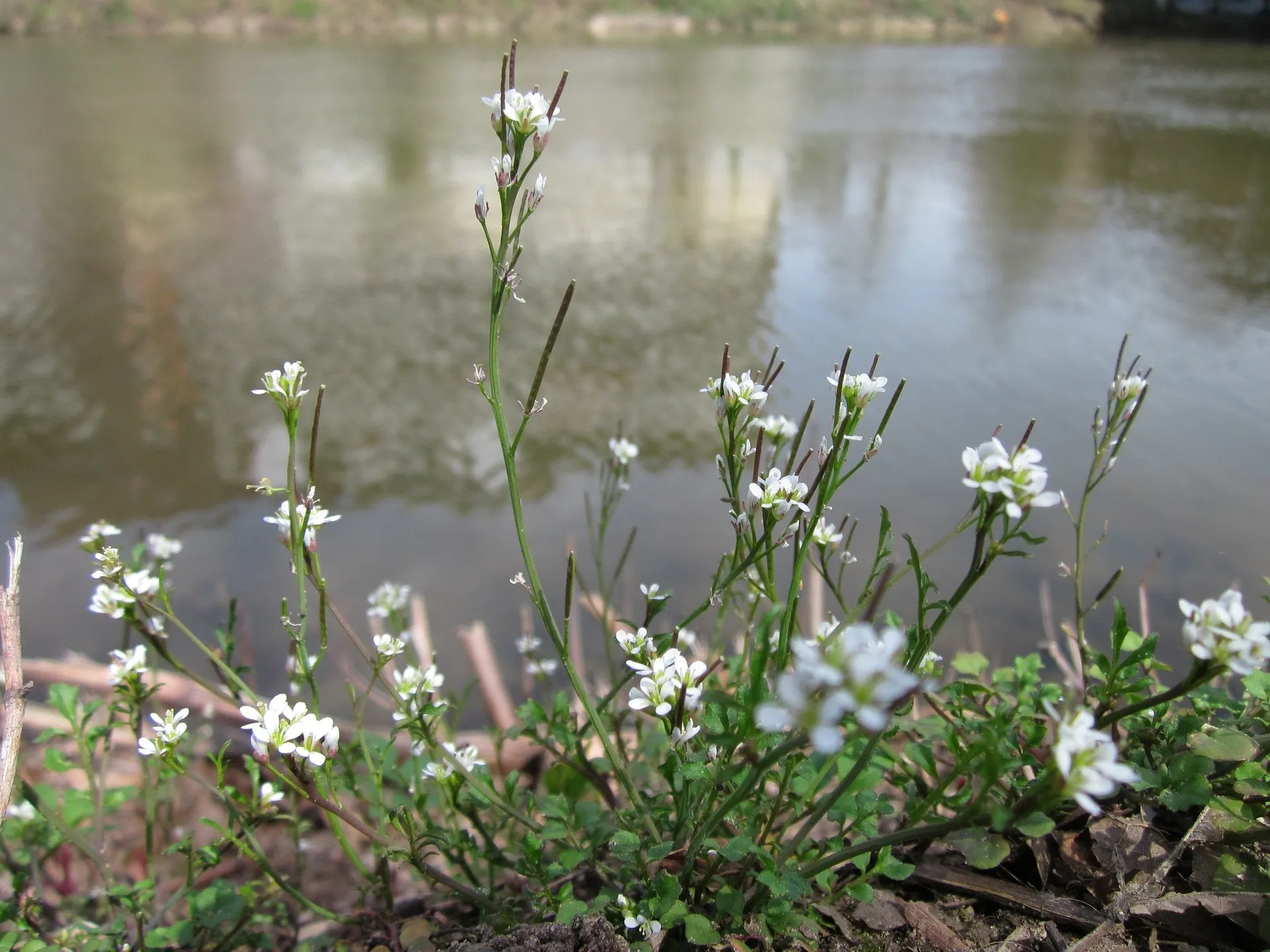
John is often asked about the best way to cook or consume the foods he forages for and he always comes back with the same thing - keep it simple. If it already has a great taste then why mess about with it or mask it under layers of other flavour?
🍣 Wild sushi rolls with bellflowers, bittercress and salad burnet
3 cups sushi rice, 120ml rice vinegar, 4-5 tbsp sugar, 4-5 tsp salt, nori seaweed sheets, assorted wild leaves and flowers
Cook the rice (find best recipe to suit you for cooking sushi rice), once cooked transfer it to a wide wooden or plastic dish to cool. Now mix the rice vinegar, sugar and salt, gently heating them before pouring onto the rice, carefully mixing it all together and then letting the rice cool again, but not in the fridge. That's it - now grab your rolling mat, your nori and your wild salads and get rolling, perhaps having watched an online tutorial first.
Cockspur (Crataegus persimilis 'Prunifolia')
Parts used: ✅ Fruit
Harvesting tip: ⚠️ Avoid the huge spines on this super armoured tree... it's not looking for a fight but it's ready for one
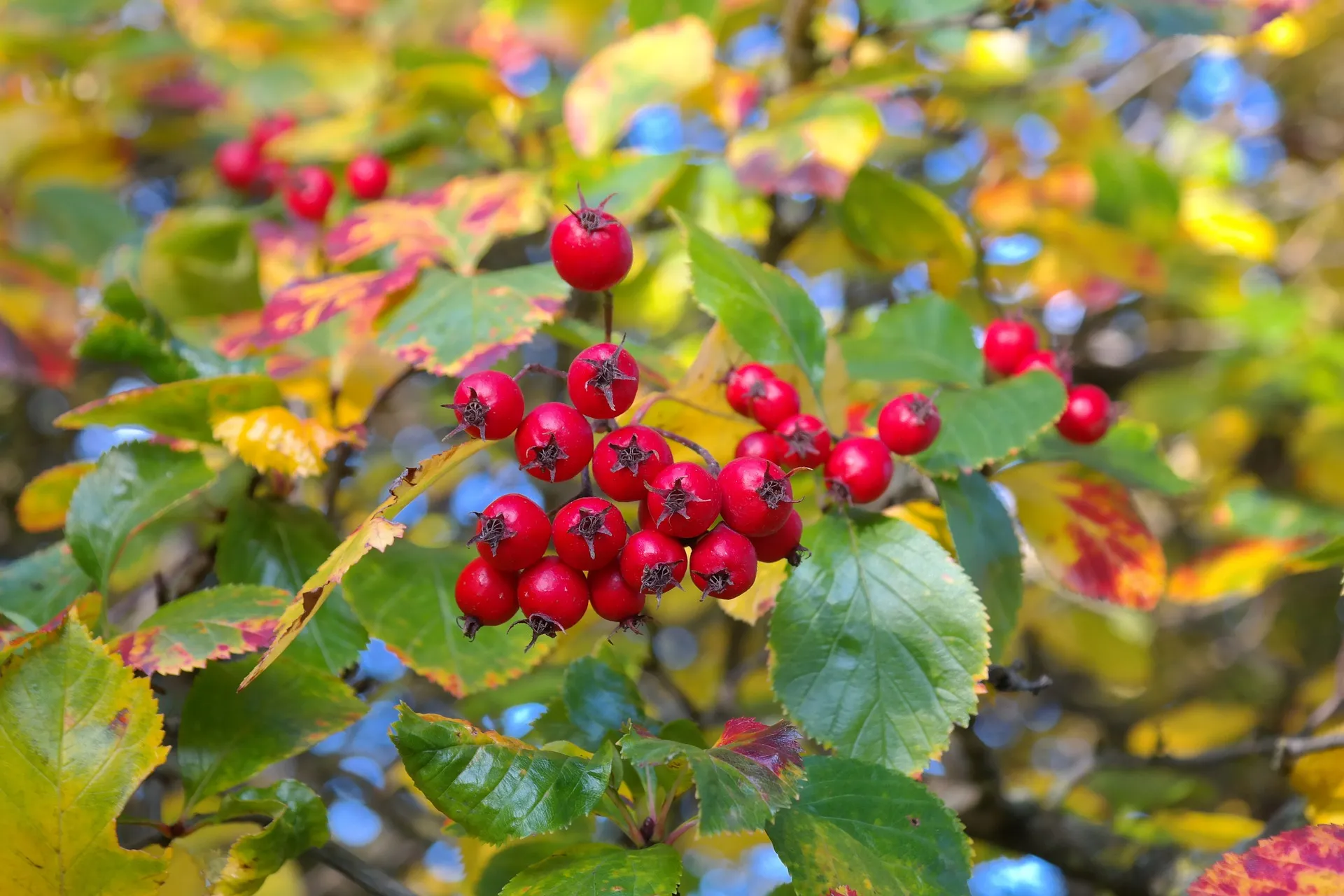
Cockspur, sometimes called a cockspur thorn, is a non-native relative of our own hawthorn tree, similar in some respects but with oval leaves like those of a plum tree and protected all over by huge aggressive-looking spines. These thorns are an ancient hangover from time when this tree would have needed to defend itself from large
🦖 grazing animals, a feature still found on some of our native trees and bushes, most noticeably on sea buckthorn.
🥄 Cockspur jelly
1kg cockspur or hawthorn berries, juice of 2 lemons, brown or white sugar (1kg per litre of liquid)
🍒 Cockspur, like hawthorn, produces a delicious, quite stiff jelly, a little similar to a quince 'cheese', probably due to the high levels of pectin found in all of these.
Wash and remove the stalks from the cockspur or hawthorn berries, then, in a big pan, bring them to the boil with 500ml water and simmer gently for 45-60 minutes. Allow the mixture to cool and then strain it through muslin, wringing it out vigorously to get the maximum amount of liquid, then add the lemon juice and measure the volume before putting it into a clean pan. Add sugar at a 1:1 ratio, i.e. for every litre of liquid add a kilo of sugar, and bring to the boil, stirring continuously and keeping it at a rolling boil for 10 minutes until it reaches its 'setting point'. Now decant the hot liquid into sterilized jars.
I hope it inspires you.🥰 Happy foraging! ❄️🚶♀️🚶♂️
From my heart ❤️ to your heart.❤️
